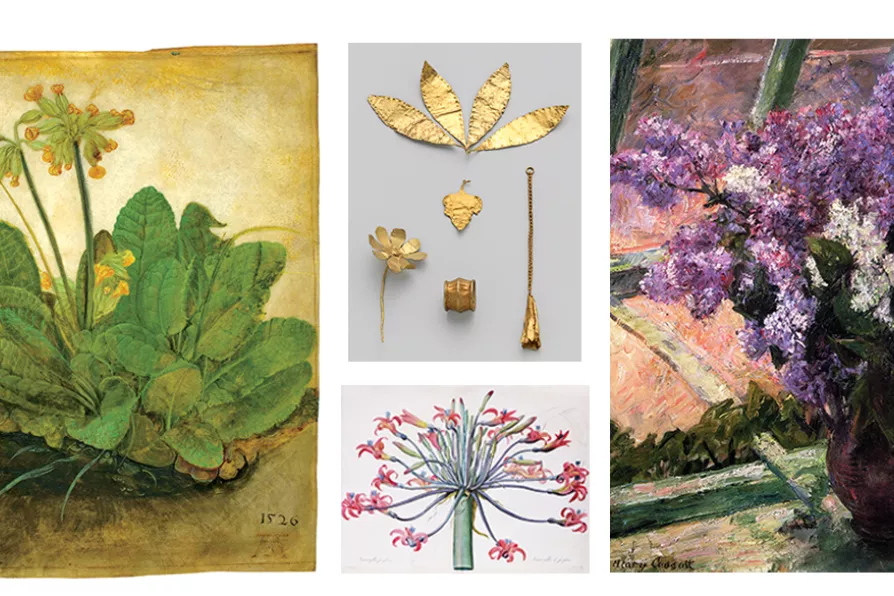The bard pays homage to his two muses: his wife and his football club
Flowers that will not fade
This lavish book transcends the botanical by discussing the flowers’ social, historical and symbolic significance, writes CHRISTINE LINDEY

 (L to R) Albrecht Durer, Tuft of Cowslips or Primula (1526); Anonymous, gold ornaments, c2300–2100 BC; Mary Cassat, Lilacs in a Window of 1880-83 and (bottom middle) Pierre-Joseph Redoute, Amaryllis josephina from Les Liliacees, 1802–16
(L to R) Albrecht Durer, Tuft of Cowslips or Primula (1526); Anonymous, gold ornaments, c2300–2100 BC; Mary Cassat, Lilacs in a Window of 1880-83 and (bottom middle) Pierre-Joseph Redoute, Amaryllis josephina from Les Liliacees, 1802–16
Flower: Exploring the World in Bloom,
by Anna Pavord,
Phaidon Press
£39.95
AT 350 pages this large format book offers beautiful, full-page illustrations of a vast variety of flowers accompanied by useful information about each one.
A stimulating introduction discusses their social, historical and symbolic significance.
Unlike most botanical books it also functions as an art book with illustrations which range far and wide across time, cultures and types of objects. A gilded Sevres porcelain plate destined for the 19th-century courts of Europe is ornately hand painted with a central bouquet of flowers surrounded by butterflies, bows and scrolls.
Similar stories

LOUISE BOURDUA introduces the emotional and narrative religious art of 14th-century Siena that broke with Byzantine formalism and laid the foundations for the Renaissance

SIMON DUFF explores the latest offering of the Chinese artist in exile AI WEI WEI

From van Gogh to Sonia Boyce, from Hew Locke to Patrick Carpenter and... Pablo Picasso

CHRISTINE LINDEY welcomes a fascinating survey of the work of the communist and socialist artists who founded the AIA in the 1930s










